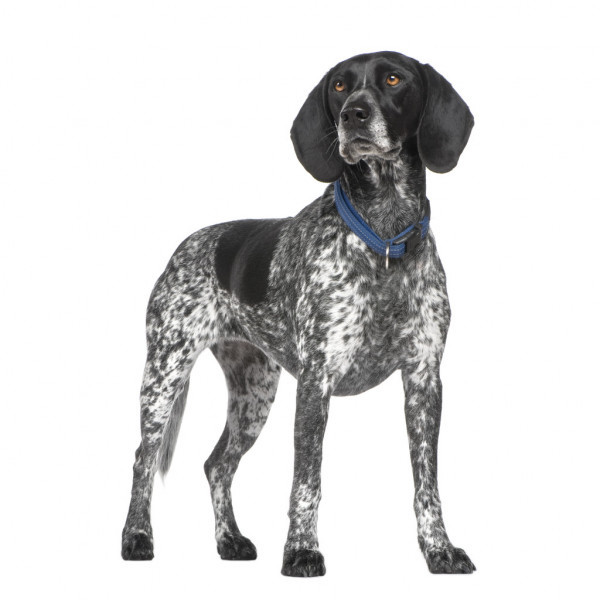
Of all countries, France has produced the largest number and widest variety of pointing dog breeds, and one of them is the Braque D’ Auvergne (pronounced Brahk Dohvern), or Auvergne Pointer.
A big, tough hunting dog built for the coniferous forests and dormant volcanoes of Auvergne in south-central France, a lively legend swirls around the Braque: When the Knights of Malta were dissolved and banished by Napoleon during his occupation in Malta, knights returning to France bought them them black and white pointing dogs they’d found on the island. As the story goes, these dogs developed into the modern Auvergne Pointer. A romantic tale, to be sure, but unlikely to be true. Craig Koshyk points out in his marvelous book, Pointing Dogs: The Continentals, that neither the order’s archivist, nor the detailed Histoire des Chevaliers de Malte written in 1726 found evidence or made mention of hunting dogs on Malta. The librarian at the library in Malta couldn’t find sufficient proof to back up the story, either.
That said, the Knights still exist (restored in 1830, the order has today become a simple charitable organization) and so does the breed. Several French “braque” breeds have been known in the area for a very long time (certainly prior to the 18th century), and M Jean Servier, former president of the Club Du Braque Francais (French Pointer Club) hypothesizes that the Braque was the result of crosses between the Gascony pointer and the Pyrenean braque. He adds that the Braque d’Auvergne is one of the oldest, if not the oldest of them all.
This breed unofficially called the “Bleu d’Auvergne” has the nose and head of a hound, and the muscular body of a running pointer (the French Kennel Club says the breed’s “economical” gallop gives it a notorious endurance). It is also set apart from other pointers by its distinctive “bleu” black mask and ticking. The breed is always black and white – the only French pointing breed that has a short black and white coat – and when seen in the sun, some of the black has a velvet blue hue, or even a silvery hue if heavily ticked.
Two variations on the dog’s coat exist: Some are white with black ticking, and blue roaning from overlapping black & white hairs is called “Charbonne,” an appearance that some fanciers regards as more valuable because it’s somewhat rare. Both meet the “French” standard which also specifies that there must be black around the dog’s ears and eyes.
Image: Three year old Braque d’Auvergne/DepositPhoto

He really seems to be one of the oldest I must say. Is this the original picture of the dog?
It’s a stock photo of the breed, Kittie. We’re a little confused by your question asking if the photo is the original picture of the dog. Presumably, the photo in the article is the original picture of THAT dog, but not of the breed which, of course, predates digital cameras. Sorry to be dense, but we really don’t understand the question.